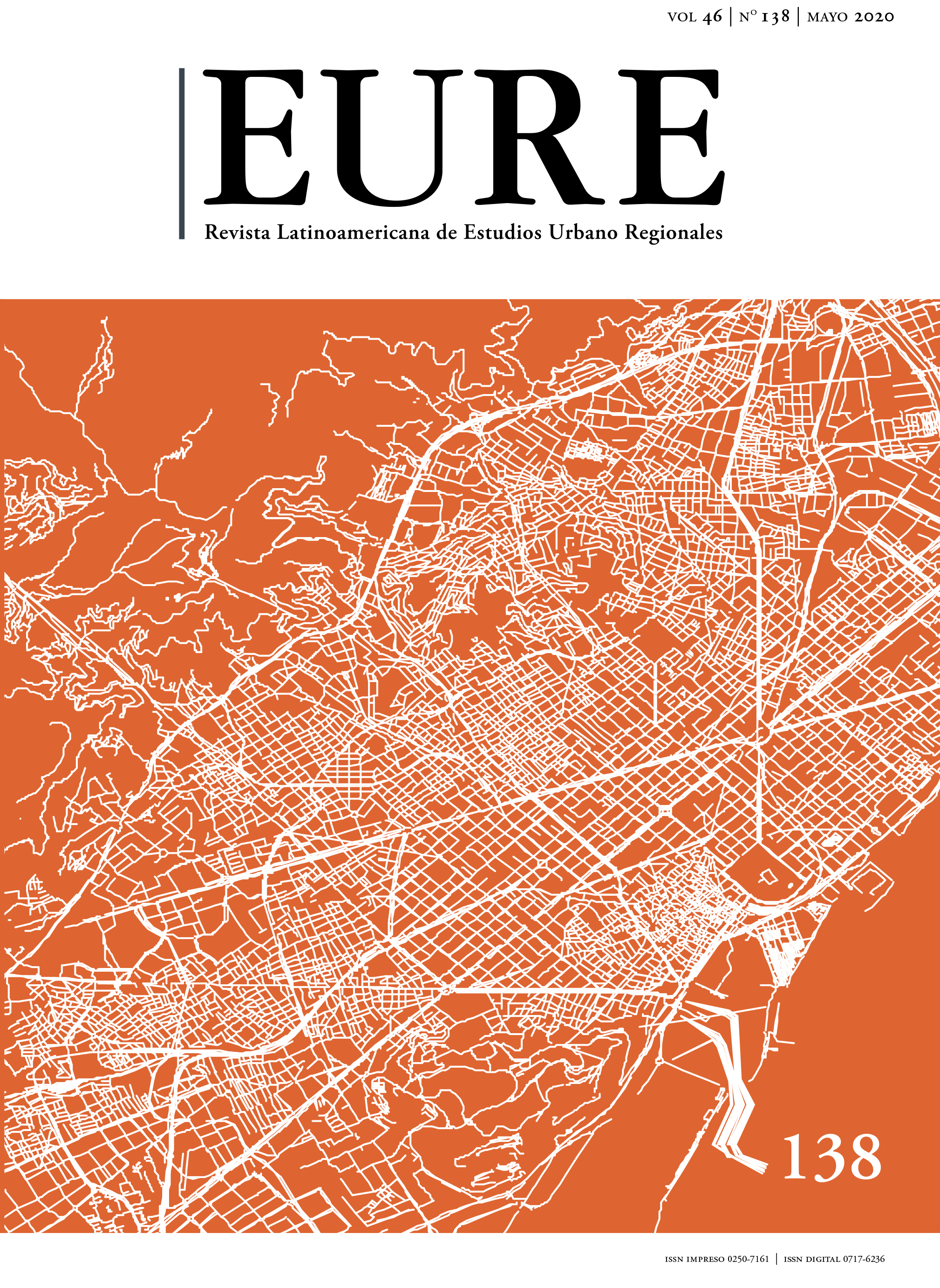The Road Infrastructure and Contemporary Regional Urbanization in the Sí£o Paulo Territory: The Case of the Urban Corridor Campinas-Sorocaba, Brazil
DOI:
https://doi.org/10.4067/S0250-71612020000200235Keywords:
networks, urban morphology, territorial restructuringAbstract
This paper is about the constitution of urban articulations extended beyond the metropolitan scale, spreading in a dispersed pattern on a regional scale, using the formation of an "urban corridor" between Campinas and Sorocaba, two core-cities of distinct metropolitan areas in the interior of the State of Sí£o Paulo as case studies. The regional transport system is the element that articulates the configuration of a linear axis of conurbation between the two metropolitan areas, during which there is an intense spatial transformation with the quick advance of the urbanized areas Í€” especially in the types of gated communities Í€” over rural areas. This shows a new trend of linear concentration of regional dispersion of urban areas in some privileged vectors, in relation to the inflow of investments, mainly of the productive sectors linked to the globalized economy, confronting the traditional conceptual divisions between urban/rural, city/region, center/periphery
Metrics
Downloads
Published
How to Cite
Issue
Section
License
Copyright (c) 2020 Revista EURE - Revista de Estudios Urbano Regionales

This work is licensed under a Creative Commons Attribution 4.0 International License.
Al momento de aceptar la publicación de sus artículos, los autores deberán formalizar la cesión de derechos de autor a EURE, según las condiciones establecidas por la Revista.
Ésta establece que el autor autoriza a EURE de manera gratuita, exclusiva e ilimitada a reproducir, editar, publicar, distribuir, publicitar, comercializar y traducir el artículo, a cualquier soporte conocido o por conocer y desarrollar.
Del mismo modo, los autores aseguran que el artículo propuesto es original, no publicado y no propuesto para tal fin a otro medio de difusión.


